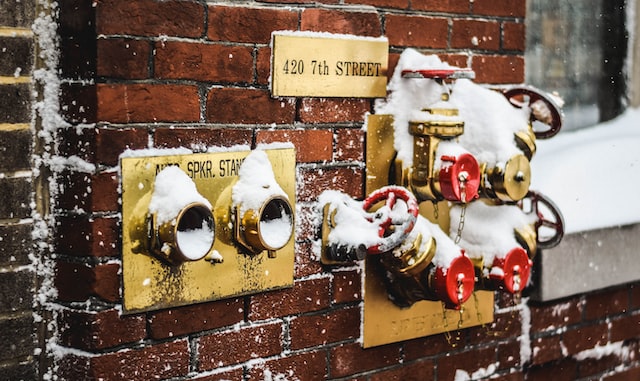
How to Avoid Frozen Pipes in Your Home
Frozen pipes can be a major problem in cold weather, as they can burst and cause significant damage to your home. However, there are several steps you can take to prevent your pipes from freezing and minimize the risk of damage.
Insulation
One of the most effective ways to prevent frozen pipes is to insulatethem. This can be done by wrapping them in insulation or using pipe sleeves. Insulation helps to keep the heat inside the pipes, which makes it less likely that they will freeze. Additionally, you should make sure that the insulation around your pipes is in good condition and not worn or damaged.
Keep Indoor Temperature Above Freezing
Another way to prevent frozen pipes is to keep the temperature inside your home above freezing. This can be done by turning up the thermostat or using space heaters to warm up cold areas of your home. Additionally, you should make sure that all doors and windows are properly sealed to prevent cold air from entering your home.
Leave Your Faucet Slightly Open
You can also minimize the risk of frozen pipes by leaving the faucet slightly open. This allows a small amount of water to flow through the pipes, which can help prevent them from freezing. Additionally, you should make sure that the faucet is located near the pipe that is most likely to freeze, such as one that runs along an exterior wall.

Disconnect Garden Hoses
Another important step in preventing frozen pipes is to disconnect any garden hoses from the exterior faucets and drain them before the winter. You should also shut off the valve that controls the water supply to the exterior faucets. This will help prevent water from freezing in the pipes and causing them to burst.
Pipe Sleeves
Finally, you should make sure that your pipes are protected from the elements. This can be done by covering any exposed pipes with insulation or pipe sleeves, or by installing a pipe heater. A pipe heater is a device that is placed around the pipe and uses electricity to keep the pipe warm. This can be a good option if you live in an area where the temperatures are extremely cold and you are unable to keep your home warm enough to prevent the pipes from freezing.
Signs of Frozen Pipes
In addition to taking preventive measures, it is also important to be aware of the signs that your pipes may be frozen. These include a decrease in water pressure, a strange smell coming from the faucet, and a change in the color of the water. If you notice any of these signs, it is important to take action right away to thaw the pipe before it bursts.
How to Thaw a Frozen Pipe
To thaw a frozen pipe, you can use a hair dryer, a portable heater, or a hot water bottle. You should start by turning off the water supply to the pipe and then apply heat to the pipe. You should move the heat source around the pipe, making sure that you don't overheat it. Additionally, you should never use an open flame to thaw a pipe, as this can be extremely dangerous.
Summary
In conclusion, frozen pipes can be a major problem in cold weather, but there are several steps you can take to prevent them from freezing and minimize the risk of damage. By insulating your pipes, keeping the temperature inside your home above freezing, leaving the faucet slightly open, disconnecting garden hoses, protecting your pipes from the elements, and being aware of the signs of a frozen pipe, you can help ensure that your pipes stay safe and functional during the winter months.
Homes for rent: Homes for rent in Massachusetts
Homes for sale: Homes for sale in Massachusetts